The poinsettia (Euphorbia pulcherrima) is a culturally and commercially important plant species of the diverse spurge family that is indigenous to Mexico an central America. It derives its common English name from Joel Roberts Poinsett, the first United States Minister to Mexico, who introduced the plant into the United States in 1825.
After supplying his own greenhouses, Poinsett also distributed plants to various botanical gardens and to some horticultural friends, including John Bartram of Philadelphia. Bartram, in turn, supplied the plant to Robert Buist, a nurseryman, who first sold the plant as Euphorbia poinsettia. The botanical name had already been given by a German taxonomist in 1833 as Euphorbia pulcherima. The poinsettia, however, has remained the accepted name in English speaking countries.
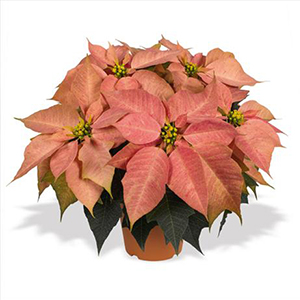
Freedom White
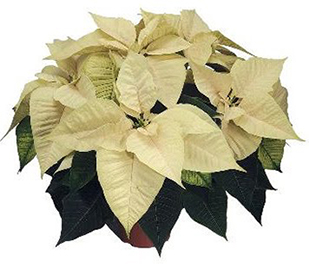
Freedom Peppermint
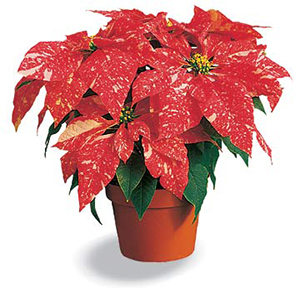
Jingle
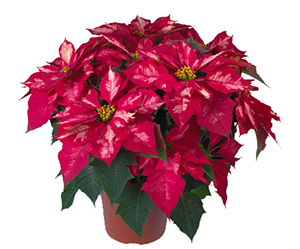
Ice Punch
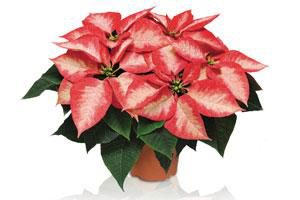
Ice Crystal
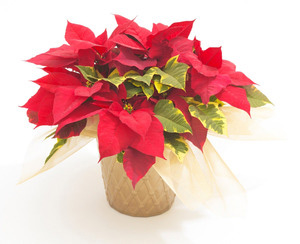
Tapestry
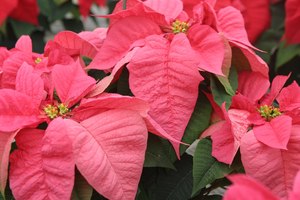
Freedom Pink
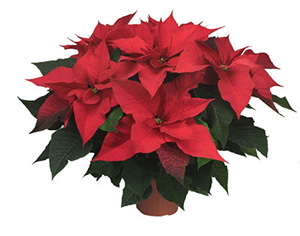
Prestige Red
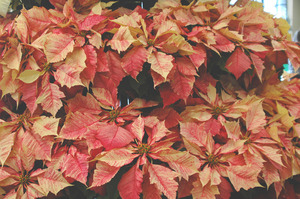
Ruby Frost
HOW TO KEEP A POINSETTIA HAPPY
1. Protect your plants from temperatures below 50 Degrees. Cold causes the leaves to drop.
2. Poinsettias require six hours of bright, indirect light daily. If there is enough natural light for you to read fine print, your poinsettia should thrive in that location.
3. Water only when the soil feels dry to the touch. Soak the soil area well so that water runs through drainage hole. Discard excess water. Never allow poinsettias to sit in water.
4. Protect plants from drafts, hot air registers, radiators, and fireplace heat.
5. Keep the bracts in bright color by controlling the temperature – do not exceed 72 Degrees in daytime or drop below 60 Degrees at night.
6. Poinsettias make a great gift. Drop into cachepots, urns, baskets, or add to color bowls. Just add a simple bow and you are done!
HOW TO RE-BLOOM POINSETTIAS FOR NEXT YEAR
1. Once bracts have faded or dropped, cut stems back to 1 or 2 inches from base.
2. Decrease watering and allow soil to get almost, but not completely, dry.
3. Keep the plant in dormancy until April. Begin normal watering when you notice new growth.
4. You can start new plants by taking cuttings from new shoots, or allow the original plant to keep growing. Re-pot original plant in new potting soil in the some size pot.
5. Fertilize monthly with MaxSea Grow Formula 16-16-16 until September and then switch to MaxSea Bloom Formula 3-20-20 until bracts appear and begin to color.
6. In October, begin giving 14 hours to total darkness a day for about eight weeks. This helps the bracts to color up for the holidays.